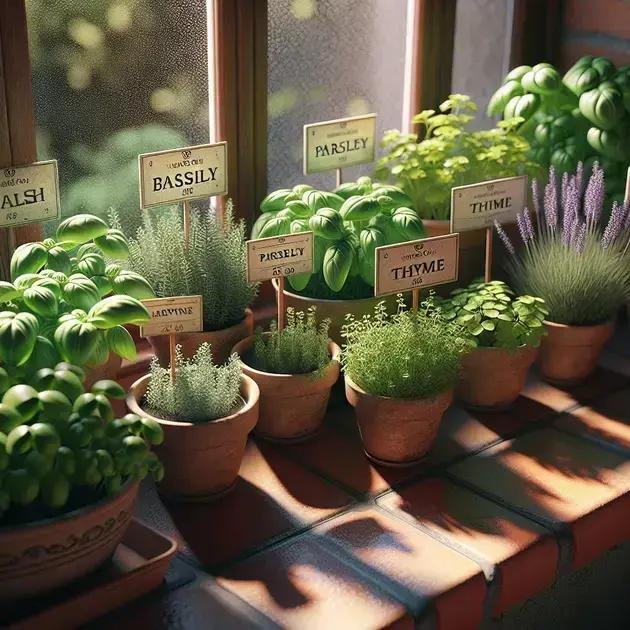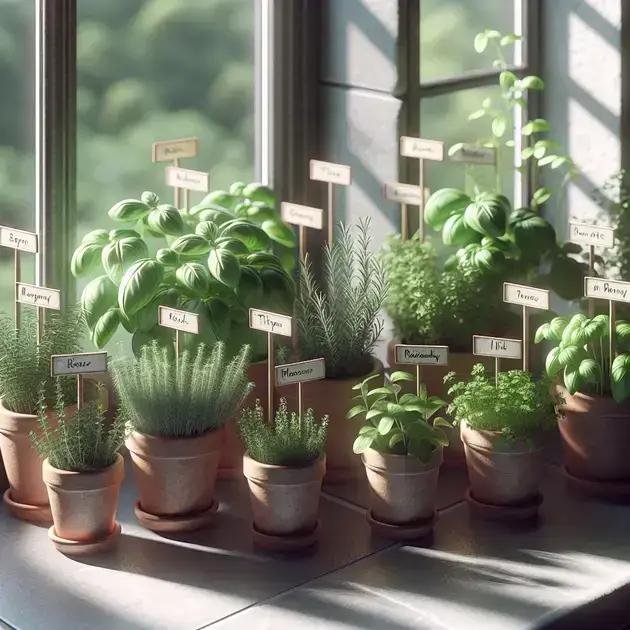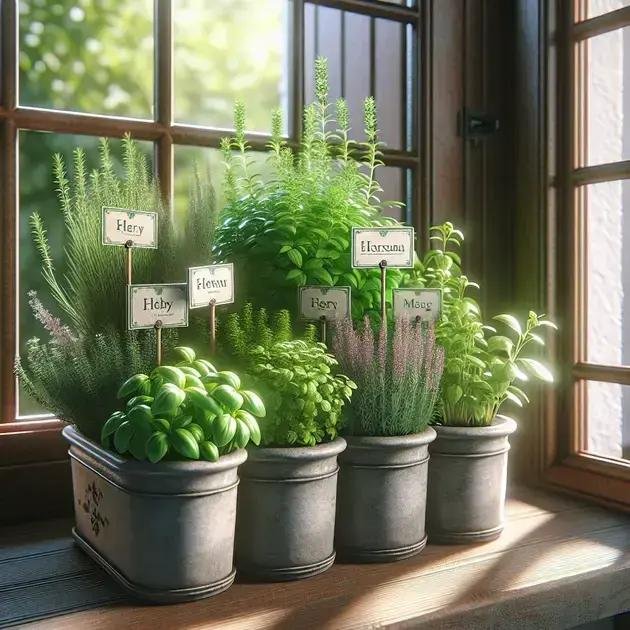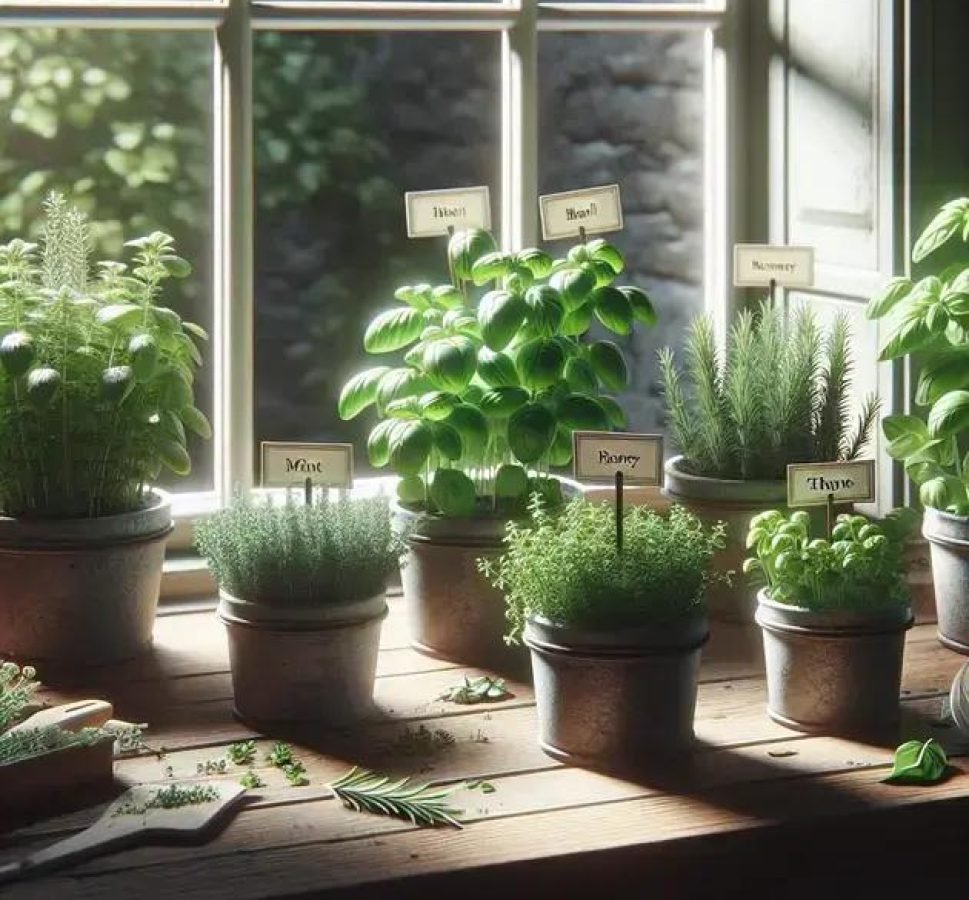Starting a herb garden for beginners involves selecting sunlit locations, using proper tools, choosing herbs like basil or mint, and ensuring good soil and care to grow fresh, flavorful plants at home.
Starting a herb garden for beginners can feel daunting, but imagine the satisfaction of fresh basil or mint at your fingertips! Ever thought about the countless dishes you could enhance? Let’s see how easy and rewarding it can be.
choosing the right location
When choosing the right location for your herb garden, consider the amount of sunlight your space receives. Most herbs thrive with at least six hours of direct sunlight daily. If you have a sunny windowsill or a south-facing balcony, these spots are ideal. In cooler climates, make use of pots that can be moved indoors during colder months.
Evaluate the space’s accessibility and convenience, as herbs require regular attention and watering. A nearby water source can make maintenance easier. Herbs also benefit from good air circulation, so ensure the location is not too cramped or closed in.
Additionally, consider the soil quality and drainage options. Herbs prefer well-draining soil to prevent root rot. If planting directly in the ground, mix in some sand or perlite to improve drainage.
Maximize Your Space
For small spaces, vertical gardens or hanging pots can maximize your growing area. Be creative with your options and tailor the set-up to the herbs you wish to grow, ensuring each has enough room to flourish.
essential tools and supplies

Equipping yourself with the essential tools and supplies for starting a herb garden can make your gardening experience more effective and enjoyable. Begin with a good set of hand tools, including a trowel, pruners, and a hand fork. These will help with planting, trimming, and turning the soil.
Consider investing in quality soil as well. Herbs generally thrive in nutrient-rich, well-draining soil. A mix that contains organic matter and perlite can provide the perfect environment. If growing in pots, ensure they have appropriate drainage holes to prevent waterlogging.
Other Necessary Supplies
Pots or containers of various sizes are crucial if you’re gardening indoors or in limited spaces. Fertilizer, such as a balanced 10-10-10 blend, can boost growth, especially during the growing season. A watering can or a hose with a gentle spray attachment ensures your herbs are watered without being damaged.
Lastly, labels or markers can be very helpful, especially if planting different types of herbs together. Knowing what’s what aids in proper care and harvesting when the time comes.
selecting herbs to grow
When selecting herbs to grow, consider your local climate and the conditions available in your chosen location. Start with easy-to-grow options like basil, mint, and parsley, which thrive in most environments with adequate sunlight and water. These can be great for beginners.
Consider the culinary uses of the herbs you choose. If you often cook Italian dishes, basil and oregano might be ideal choices. For teas, mint and chamomile are excellent options. This practical approach ensures your efforts in growing will also enhance your meals.
Factors to Consider
Determine the size and growth habits of your chosen herbs to ensure you have enough space and appropriate containers if needed. Some, like mint, can spread quickly and may require their own pots to prevent them from taking over garden space.
Check the soil and water requirements for each herb. Most herbs prefer well-draining soil and will suffer if left in standing water. Tailor your care routine to match the needs of each plant for optimal growth.
planting and caring for herbs

To successfully plant and care for herbs, start by preparing your soil. Use a well-draining potting mix rich in organic matter. Make sure to check the specific needs of each herb, as some might require more or less water and sunlight.
When planting seeds or seedlings, follow the recommended spacing guidelines on the seed packet or label. This ensures each plant has enough room to grow and access to nutrients. Water your herbs regularly, but be careful not to overwater. Most herbs prefer slightly dry conditions rather than being constantly wet.
Regular Maintenance
Regular pruning encourages growth and keeps your herbs healthy. Remove dead or yellowing leaves to prevent pests and diseases. Fertilize your herbs once a month with a balanced fertilizer to support their growth.
Avoid using chemical pesticides; instead, opt for natural pest control methods like introducing beneficial insects or using homemade sprays. Keeping a close eye on your plants will help catch any issues early, ensuring your garden remains vibrant and productive.
common mistakes to avoid
Avoiding common mistakes in herb gardening can save you time and frustration. One frequent error is overwatering, which can lead to root rot. Ensure your pots or garden beds have proper drainage and be mindful of each herb’s water needs.
Another mistake is planting herbs too close together. Herbs need space to grow and access sunlight and nutrients. Follow spacing guidelines to ensure healthy development.
Appropriate Sunlight and Soil
Placing herbs in low-light areas can stunt their growth. Most herbs need at least six hours of direct sunlight daily. Monitor their light exposure and adjust locations if necessary.
Neglecting soil quality is another pitfall. Herbs thrive in nutrient-rich, well-draining soil. Check the soil type and amend it with compost or organic matter if needed to enhance fertility.
Finally, failing to prune regularly can lead to leggy plants. Pruning encourages growth and keeps herbs healthy. Keep an eye on your plants and trim them back as needed to maintain their vitality.
harvesting and using your herbs

When harvesting herbs, timing is key to capturing peak flavor. Aim to pick herbs in the morning after the dew has evaporated but before the sun gets too hot. This helps retain the essential oils that give herbs their flavor. Use sharp scissors or pruning shears to avoid damaging the plant.
Consider how much you’ll need and cut conservatively, especially if the plant is still young. Regular trimming encourages growth, but over-harvesting can weaken your herbs.
Using Fresh Herbs
Fresh herbs can elevate any dish. Toss chopped basil into a pasta sauce or sprinkle fresh parsley over salads. Mint leaves can be muddled into cocktails, and rosemary sprigs infused in roasted meats. Experiment with herbs in different recipes to find what you like best.
For long-term use, consider drying your herbs by hanging them upside down in a dry, airy place. Store dried herbs in airtight containers in a dark cupboard to preserve their flavor.
The Rewards of Growing Your Own Herb Garden
By starting a herb garden, you’re not just growing plants; you’re cultivating a rewarding hobby that brings fresh flavors to your meals. From choosing the right location to selecting the perfect herbs, every step enriches your understanding.
Using essential tools and knowing how to care for your plants ensures a flourishing garden. Avoiding common mistakes like overwatering helps maintain healthy growth.
When it comes time to harvest, the freshness and flavor of your homegrown herbs add a special touch to any dish. Whether you use them fresh or dry them for later, the utility is endless.
Embrace the journey of growing your own herbs and enjoy the satisfaction and flavor they bring to your kitchen.





